
If there’s one brand that needs new life, it’s Volkswagen Philippines. The last time they launched an all-new model was way back in 2021. That model was the T-Cross and at first, it was decent in terms of sales, but quickly got overtaken by the competition in terms of features and pricing.
Now, VW PH is keen to reintroduce itself as a major player locally and to give a glimpse into how the future of the brand will be. As such, we were given the chance to spend a few hours with VW’s newest model, the Tharu.

2024 Volkswagen Tharu SEL
As mentioned earlier, the Tharu serves as the appetizer model that will dictate how VW PH will transform its product line-up. At first glance the Tharu does adopt the new brand design philosophy, it is unmistakably a VW but has some modern touches and updates. The front is a nod to the aggressive styling of the Volkswagen Golf with its down-swooping ‘intakes’, but are complimented by the brand’s intelligent LED lighting system called ‘IQ Light’.
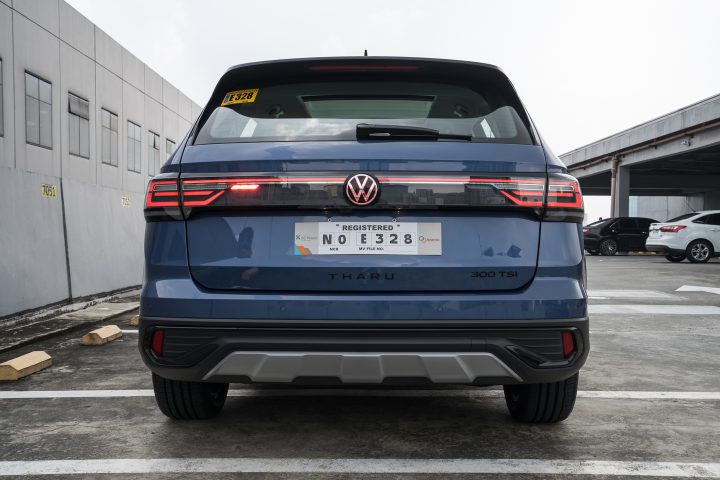
Overall, the size of the Tharu is decent from the outside. According to the brand, it more or less is the same size as the previous generation Tiguan (and the Tharu fills that slot in the lineup). It has some black ‘overfenders’ on the wheel wells and has 18-inch 3-tone (silver, black, red) alloy wheels. The rear though is where the Tharu really sets itself apart with a full LED taillight cluster with an illuminated VW logo to boot.

Inside, the Tharu exudes a playful yet refined philosophy. It has a Deep Blue and pine Green with silver accents color palette. I really found the interior to be refreshing and pleasing to look at, a welcome break from the usual black, brown, or beige interiors brands use now. I can also say with certainty that after examining the panels the Tharu is a mighty step up in terms of fit and finish compared to the smaller T-Cross.
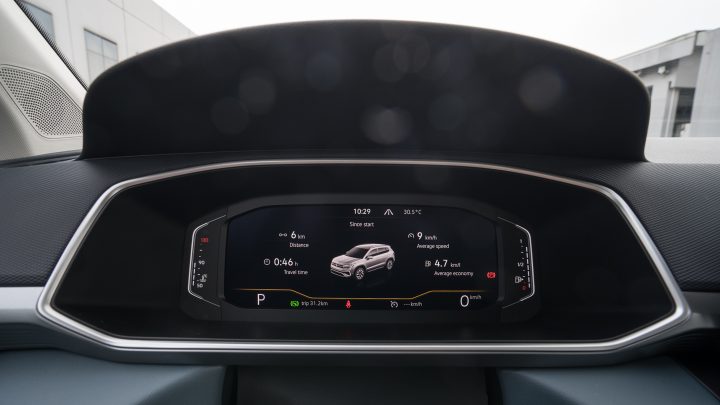
The Interior is dominated by the massive 12-inch infotainment display screen (with gesture control) that only has Apple CarPlay on tap. The screen looks crisp and is seemingly responsive but the gesture control does take some getting used to. The digital instrument cluster is also a big screen measuring in 10.25 inches, and the steering wheel features some haptic/capacitive touch buttons that VW is adapting globally.
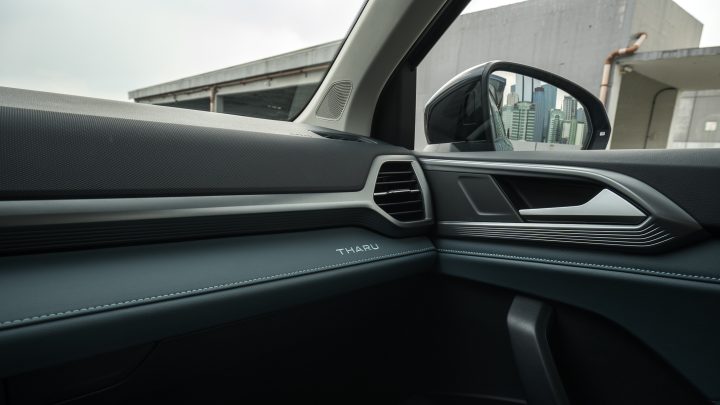
In fact, most of the buttons are this type and because it was my first time to experience these buttons I was both confused and amused at the same time. While Volkswagen has done a decent job in making them responsive and interactive, I felt that traditional buttons would do the trick better and are more ergonomic, nonetheless, if you’re into gimmicks and tech then the Tharu has plenty to keep you happy.

I did appreciate though that the top-of-the-line SEL variant we used had 12-way adjustable seats for both front passengers, which is a rarity in the market. Lastly, the interior space is more than decent for all sizes of people, a long journey with 4 adults would be bearable for front and rear passengers, not to mention the massive luggage capacity of 455 liters (with the rear seats up).
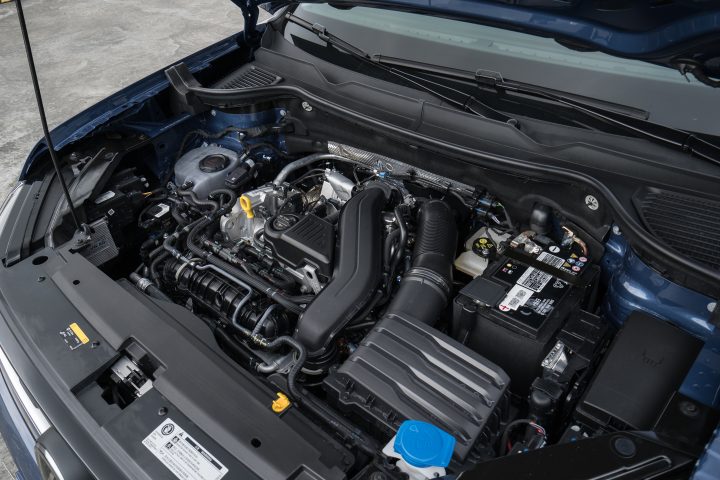
Given that we were only allowed to use the car for a few hours, the most driving I did was in the city. The new 1.5-liter 4-cylinder turbocharged gasoline engine makes a healthy 160 Ps and 250 Nm of torque, it is then paired to a 7-speed (dry type) dual-clutch transmission.
The first thing I noticed was how much smoother the transmission was compared to other wet-type dual-clutch shifters out there, it was very close to feeling like a traditional automatic. I barely felt any jerkiness and unsettling shifts, which for me is such a big plus in terms of comfort for driver and passenger. With regard to power delivery, the engine makes a decent throaty roar that isn’t too loud or too quiet, but I was pleased with the smoothness of the engine. The tuning in normal or eco mode really tempers the car’s behavior eliminating sudden bursts of speed with manageable surges.
The steering is also very light and user-friendly, and handling is decent with a suspension system bordering on a soft but slightly firm side. I liked that the Tharu doesn’t wallow or dip too much during cornering, it felt very sure of itself. NVH levels were also decent, driving over some terrible roads barely registered in the interior and there was no uncomfortable feeling sent through the steering wheel.
As an urban runabout and occasional long-drive companion, I can tell that the Volkswagen Tharu can do both well. My main gripe would be the lack of ADAS safety systems like adaptive cruise control or lane keep assist which almost all its competitors have.
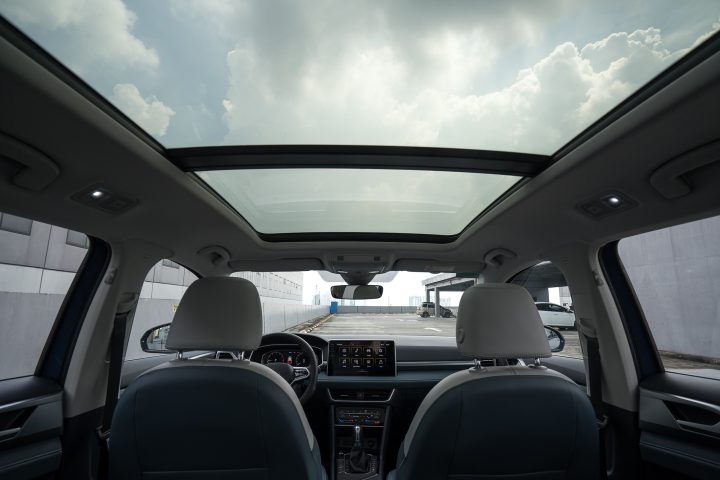
Pricing and Verdict
The 2024 Volkswagen Tharu is available in 2 variants the SE and higher grade SEL with prices starting at PHP 1,808,000USD 30,700INR 2,613,102EUR 29,561CNY 224,192 and topping out at PHP 1,945,000USD 33,026INR 2,811,109EUR 31,801CNY 241,180. Which in all honesty is pricey compared to most of it’s rivals, but the Tharu does represent VW PH turning a new leaf so to speak.
The Tharu is a model more or less complete in terms of features customers want and is a true representation of what a quality VW product should be. Is it worth it? stay tuned for our full review once we get our hands on it for longer.


